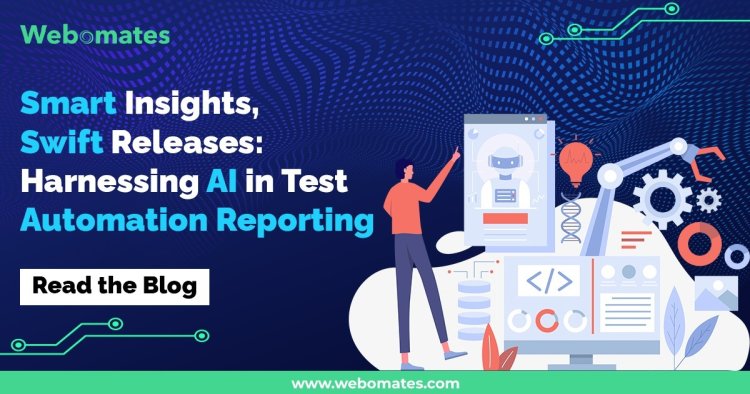Harnessing AI in Test Automation Reporting
Share this Post to earn Money ( Upto ₹100 per 1000 Views )

Have you automated your test setup yet?
Of course.
Great!! How are you tracking and documenting your current results?
I have resources and means to do that.
Nice!! But, what are the key metrics that you are prioritizing?
To be honest, we end up creating a generic report many times. Can you help?
Well, there are so many such questions that you have to answer because testing doesn’t end with setting up the automation, it needs to be properly tracked and reported. These insights further help you with the thorough and quick decision making process. However, manually gathering these reports, analyzing and creating dashboards is a time taking process and this is where AI steps in.
But before we start talking about AI in test reporting and analysis, let’s quickly recap the value of reporting and analysis in software testing.
What Is a Test Automation Report?
Test automation is like a blueprint that shows the results of your test execution. It shows you the number of tests executed, the details of those tests, execution time, steps that passed, failed or skipped due to whatever reason. These reports encapsulate the entire process in numbers to make you understand and provide you with smart insights.
Importance of Test Automation Reporting
Test automation reporting serves as a transparent documentation of test outcomes, allowing teams to make data-driven decisions and ensure the efficiency and reliability of their software. These reports offer real-time visibility into testing progress, enabling quick issue identification and resolution. By presenting actionable metrics, they empower teams to optimize resources, make informed decisions, and instill confidence in clients and stakeholders.
Traditional Reporting Challenges
- Limited Insights: Traditional reporting often provides only surface-level information, leaving stakeholders with limited insights into the true health of the project.
- Manual Effort: The manual compilation of test data and generation of reports consumes valuable time and resources, hindering efficiency.
- Data Overload: Drowning in a sea of data, it becomes tough for stakeholders to extract meaningful information from overwhelming test reports.
- Static Reporting: Static reports lack real-time updates, limiting their relevance and making them less adaptable to dynamic project changes.
- Lack of Context: Reports without contextual information leave stakeholders guessing about the significance of the presented data.
- Ineffective Communication: Poorly presented information fails to convey the testing story, leading to misunderstandings among team members.
- Reactive Approach: Traditional reporting tends to be reactive, addressing issues only after they’ve occurred, rather than proactively preventing them.
- Complex Test Environment: Understanding and interpreting reports become more challenging, leading to confusion.
The Role of AI in Test Automation Reporting
Leveraging AI in test automation reporting can simplify the entire process and give you in-depth insights.
Smart Analytics and Insights:
AI, armed with machine learning algorithms, reshapes how we interpret test data. By delving deep into the intricacies, it provides nuanced insights, enabling a comprehensive understanding of software quality. Identifying patterns, trends, and anomalies becomes not just a possibility but a forte of AI-driven analysis. Read for more about this blog : Test Automation Reporting














